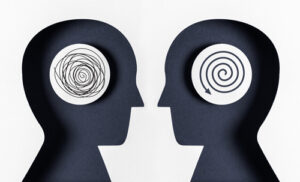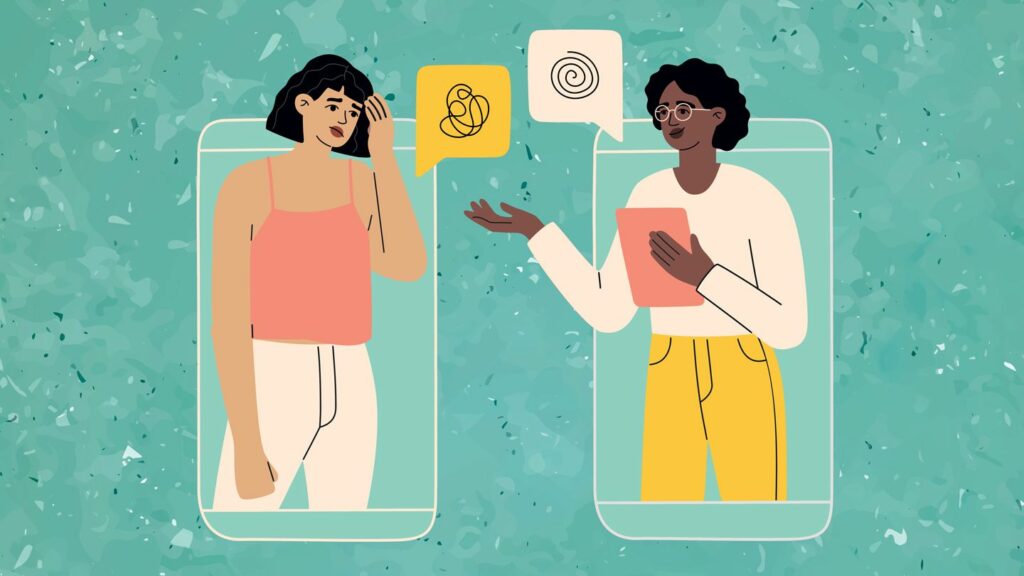Depression can cast a long and dark shadow over one’s life, making even the simplest of tasks seem insurmountable. The weight of despair, hopelessness, and anxiety can be overwhelming. However, there is a therapeutic approach that has shown great promise in helping individuals combat depression: Exposure Therapy. In this article, we will explore what exposure therapy is, how it can benefit those struggling with depression, and what you should consider if you’re thinking about giving it a try.
Contents
The Role of Exposure Therapy in Treating Depression

While exposure therapy is not a first-line treatment for depression, it can play a limited role in certain cases where depression is comorbid with anxiety or trauma-related symptoms. Here’s how exposure therapy may be relevant in treating depression:
- Comorbidity: Depression often co-occurs with anxiety disorders, such as generalized anxiety disorder or social anxiety disorder. In such cases, addressing the anxiety component with exposure therapy can indirectly improve depressive symptoms. Reducing anxiety can lead to a decrease in feelings of hopelessness and sadness commonly seen in depression.
- Trauma-related depression: Many individuals with depression have a history of traumatic experiences, including childhood abuse, accidents, or combat-related trauma. Exposure therapy, particularly in the context of trauma-focused cognitive-behavioral therapy (CBT), can help address the underlying trauma, which may be contributing to both depression and anxiety.
- Avoidance behaviors: Some individuals with depression engage in avoidance behaviors, which can perpetuate their depressive symptoms. For example, someone with depression may avoid social situations due to social anxiety. Gradual exposure to social situations in a therapeutic context can help them confront and overcome avoidance, potentially leading to a reduction in depressive symptoms.
- Mixed presentations: In cases where individuals have both depression and a specific phobia or OCD, exposure therapy may be included as part of a comprehensive treatment plan. Treating the comorbid anxiety disorder can enhance the overall effectiveness of treatment.
Types of Exposure Therapy
There are several forms of exposure therapy, each tailored to the individual’s needs and circumstances:
In Vivo Exposure
This form of exposure therapy involves direct, real-life exposure to the feared or avoided stimulus or situation. For example, if someone has a fear of flying, in vivo exposure would involve taking actual flights, starting with short, less anxiety-inducing trips and gradually progressing to longer ones.
Imaginal Exposure
Imaginal exposure involves the individual mentally revisiting and vividly describing their traumatic or distressing memories or situations. This is often used in the treatment of PTSD. The goal is to help the person process and desensitize themselves to these memories.
Virtual Reality Exposure
Virtual reality exposure therapy uses computer-generated simulations to create a controlled and immersive environment that replicates the feared or anxiety-provoking situation. This is especially useful for treating phobias, PTSD, and social anxiety, as it allows for repeated and safe exposure to situations that may be challenging to recreate in real life.
Interoceptive Exposure
This type of exposure therapy targets panic disorder and agoraphobia. It involves deliberately inducing bodily sensations that resemble the physical symptoms of a panic attack (e.g., increased heart rate, shortness of breath) in a safe and controlled environment. The individual learns to tolerate and manage these sensations without experiencing panic.
Benefits of Exposure Therapy for Depression

However, in cases where depression is comorbid with anxiety, specific phobias, or trauma-related symptoms, exposure therapy can provide some benefits:
- Reduction in Avoidance Behaviors: People with depression often engage in avoidance behaviors, which can contribute to the maintenance of depressive symptoms. Exposure therapy can help individuals confront and gradually overcome these avoidance behaviors by facing the situations or stimuli they have been avoiding. This can lead to increased functioning and a decrease in depressive symptoms.
- Anxiety Reduction: Exposure therapy is designed to reduce anxiety and fear responses. In cases where anxiety or specific phobias are co-occurring with depression, successfully reducing anxiety can indirectly alleviate some of the depressive symptoms. Reduced anxiety can lead to improved mood and a decreased sense of hopelessness.
- Addressing Trauma: For individuals with comorbid depression and a history of trauma, exposure therapy may be used as part of trauma-focused cognitive-behavioral therapy (CBT). Addressing and processing traumatic memories or experiences can help reduce both trauma-related symptoms and depressive symptoms.
- Improved Coping Skills: Exposure therapy teaches individuals coping strategies and skills to manage anxiety and distress. These skills can be beneficial for individuals with depression, as they can apply them to situations where they feel overwhelmed or anxious, contributing to better overall mental health.
The Process of Exposure Therapy
The process of exposure therapy involves systematically exposing individuals to the feared or distressing stimulus, situation, or memory in a controlled and gradual manner. Here are the key steps involved in the process of exposure therapy:
Assessment and Goal Setting
The first step in exposure therapy is a thorough assessment by a qualified therapist. Together, you’ll set clear goals and identify the specific situations or triggers to address.
Gradual Exposure
Exposure occurs gradually, starting with less anxiety-provoking situations and progressively moving towards more challenging ones. This gradual approach ensures safety and minimizes overwhelming anxiety.
Therapist Guidance
A trained therapist provides guidance and support throughout the process. They help individuals develop coping strategies and manage their emotional responses.
Monitoring Progress
Regularly tracking progress is essential. Celebrating small victories along the way can boost motivation and reinforce the effectiveness of exposure therapy.
Overcoming Common Concerns

Engaging in exposure therapy can be a challenging but highly effective way to address anxiety disorders, phobias, and trauma-related conditions. However, individuals often have common concerns or fears about undergoing exposure therapy. Here are some common concerns and strategies for overcoming them:
Fear of Intensified Anxiety: Many people worry that exposure therapy will make their anxiety worse. It’s essential to understand that exposure therapy is designed to initially increase anxiety but then lead to a reduction in anxiety over time. Strategies to overcome this concern include:
- Education: Understanding the rationale behind exposure therapy and how it works can help individuals accept and manage increased anxiety during exposure exercises.
- Relaxation Techniques: Learning and practicing relaxation techniques, such as deep breathing or progressive muscle relaxation, can help manage anxiety during exposures.
Fear of Losing Control: Some individuals fear that exposure therapy will make them lose control or “go crazy” when confronting their fears. To address this concern:
- Gradual Exposure: Exposure therapy is typically conducted in a gradual and controlled manner, starting with less anxiety-inducing situations and progressing to more challenging ones. This helps individuals maintain a sense of control.
- Trust in the Therapist: Building trust and rapport with the therapist is crucial. Knowing that the therapist is guiding the process can provide a sense of security.
Combining Exposure Therapy with Other Treatments
Here are some ways in which exposure therapy can be combined with other treatment modalities:
- Cognitive-Behavioral Therapy (CBT): Exposure therapy is often integrated into CBT, a broader therapeutic approach that focuses on identifying and modifying irrational thoughts and behaviors. Together, CBT and exposure therapy can help individuals address both the cognitive and behavioral aspects of their anxiety or fear.
- Medication: In some cases, individuals with anxiety disorders may benefit from medication. These are such as selective serotonin reuptake inhibitors (SSRIs) or benzodiazepines, to manage their symptoms. Medication can be used alongside exposure therapy to reduce the severity of anxiety symptoms, making it more manageable for individuals to engage in exposure exercises.
- Mindfulness and Relaxation Techniques: Mindfulness-based therapies, such as Mindfulness-Based Stress Reduction (MBSR) or Mindfulness-Based Cognitive Therapy (MBCT), can complement exposure therapy. These techniques help individuals develop greater awareness and acceptance of their thoughts and emotions. This can be beneficial when confronting fears or anxieties.
Tips for Finding a Qualified Therapist
Finding a qualified therapist is a crucial step in receiving effective mental health treatment. Here are some tips to help you find the right therapist for your needs:
Define Your Goals and Needs:
- Determine what you want to achieve through therapy and the specific issues or challenges you want to address.
- Consider whether you have a preference for a particular therapeutic approach (e.g., CBT, psychoanalysis) or if you’re open to different modalities.
Seek Recommendations:
- Ask your primary care physician, psychiatrist, or other healthcare providers for therapist recommendations.
- Talk to trusted friends, family members, or colleagues who have had positive experiences with therapy.
Use Online Directories:
- Utilize online therapist directories such as Psychology Today, GoodTherapy, or TherapyDen. These directories allow you to search for therapists by location, specialty, and insurance coverage.
Check Credentials:
- Verify that the therapist has a license to practice in your state. You can typically check licensing boards or websites to confirm their credentials.
- Consider the therapist’s education and training, including their degree (e.g., Ph.D., Psy.D., LCSW) and specialization.
Conclusion
Exposure therapy is a powerful tool in the fight against depression. By confronting fears and gradually reintroducing oneself to anxiety-inducing situations, individuals can regain control of their lives and find relief from the grip of depression. If you are experiencing depression-related issues, Online Depression Counseling at TherapyMantra can help: Book a trial Online therapy session.


